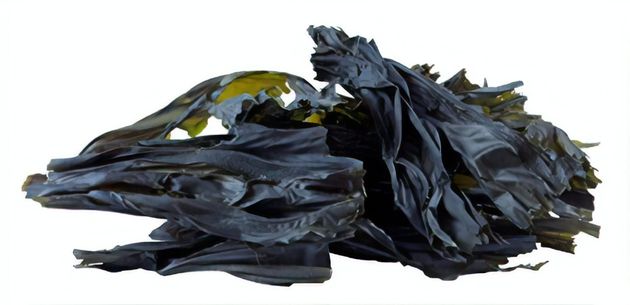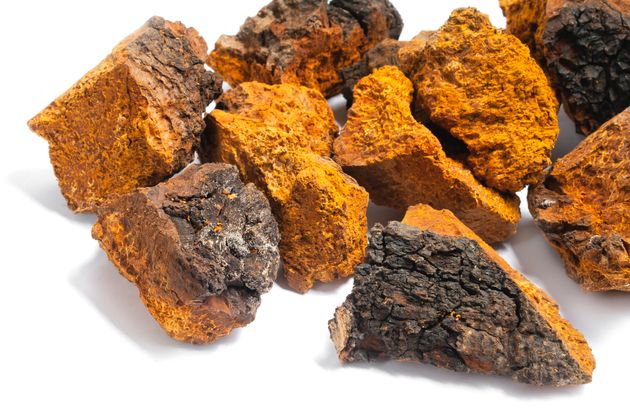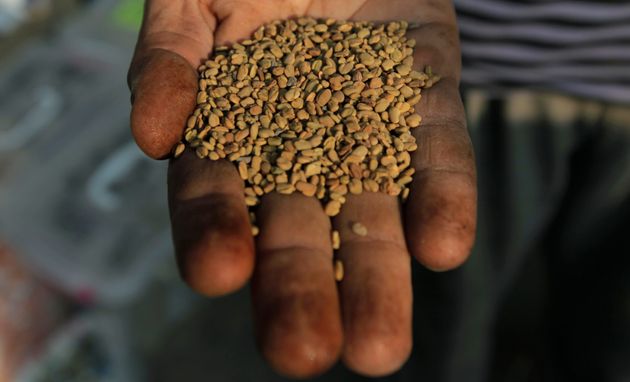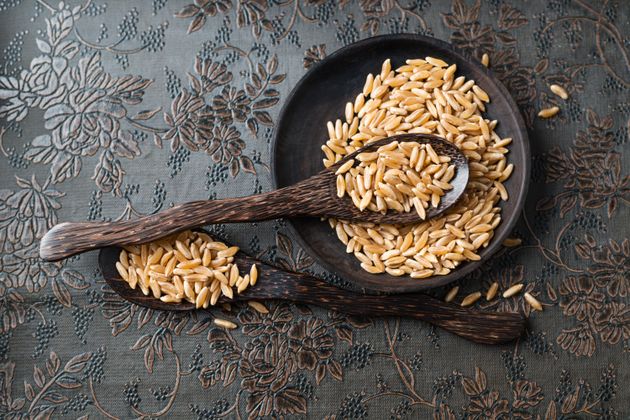Now that the new year is here, everyone feels pressure to reboot and revive their diet. Regardless of what the new health food trends for 2020 will be, we’ve got a list of five foods that are both delicious and nutritious additions to any January diet.
Sugar Kelp

If the late 2010s were marked by a fierce dedication to the green that is kale, expect a slightly different tack in 2020. Sean Barrett, a Montauk fishing professional responsible for the sustainable seafood purveyor Dock to Dish, has been working in conjunction with GreenWave on Long Island’s East End to develop a crop of sugar kelp.
“We were astonished by how rapid the growth was,” Barrett told HuffPost. “GreenWave has a small nursery, where they seed long lines of kelp seeds into a marine twine rope, and then they send those spools out to growers. In 2019, we seeded and grew and harvested and cooked and served sugar kelp.”
This particular type of seaweed, which thrives in nitrogen-rich waters and can grow in the same column of space as oysters, offering oyster farmers a way to expand their crop base, has numerous nutritional benefits. High in vitamins A, B1, B2, D and E, it’s also a great source of zinc, magnesium, iodine, potassium and calcium. The kelp can be dried and eaten as a snack, added to soups and stews, eaten in salad form, or added to butter to accent other foods. Atlantic Holdfast Seafood Co. is one of the largest commercial producers of sugar kelp. The company sells its crops online.
Barrett confidently predicted that “2020 will be the year that kelp will be recognised as the new kale.”
Sweetgreen, the American fast-casual restaurant chain known for its healthful salads, will be offering the sea crop to its customers. Barrett sees this as just the beginning. Sugar kelp, he said, is “the gateway drug to 10,000 species of edible plants that grow in the ocean.”
“It’s superrich in electrolyte minerals, including calcium, magnesium, phosphorus, potassium and sodium,” said Stefanie Sacks, a culinary nutritionist and author of ”What the Fork Are You Eating. “It definitively has trace minerals as well, such as chromium, copper, iodine … which is important to note, because it’s a trace mineral and it’s critical for normal thyroid function.”
Sugar kelp, Sacks noted, is also high in folic acid (vitamin B9) and is low in calories, low in carbohydrates and low in fat. “I don’t like to use the word superfood, but it is a nutritional powerhouse,” she said.
Chaga Mushrooms

Technically a species of mushroom, chaga is a parasitic fungus found on certain varieties of trees. The fungus has a long history in the wellness community; its immunity-boosting qualities have been used for centuries in China and Siberia. Today, Sloan Kettering recognises that chaga mushrooms may prevent and treat cancer, as they have been found to inhibit cancer progression in laboratory animals.
“It’s more like a piece of hard wood, and it grows on the side of birch trees in very cold climates,” said Bridget LeRoy, co-founder and former co-owner of Chaga Island, a prepared tea that uses the mushroom. “You cannot culture chaga. It only can be foraged. If you take it in powder form as a capsule or as a tea that you put in a tea bag that you dunk in water, it does absolutely nothing,” she added.
The key to extracting the benefits of chaga ― according to LeRoy, the mushroom can work as an antiviral, lower blood sugar and reduce inflammation ― is to cook it in water at a low temperature for a long time and then consume it as a tea or broth. LeRoy suggests using a slow cooker for maximum benefit. She adds cinnamon sticks to her brew, but said chaga can take on the flavour of nearly anything you add to it.
“It has more antioxidants than any food on earth, and it’s anti-inflammatory. You can take it if you think you’re getting sick,” LeRoy added. You can buy these mushrooms on eBay and Amazon (look for chaga chunks that do not come from polluted areas, like China).
Nutritional Yeast

This species of yeast ― Saccharomyces cerevisiae ― is used in bread-baking and beer-brewing, but it can also be used as an additive to foods, offering secondary “umami” flavours and even taking the place of cheese in some recipes. It’s also a natural thickener and can be used to add a fuller consistency to sauces without the addition of flour or fat. One easy way to introduce it to your diet is to sprinkle it over popcorn for a high-fibre, low-calorie, extra delicious snack.
There is no denying how much punch this ingredient packs, in terms of nutrition. Nutritional yeast, which is available in most health food stores, many grocery stores and online, is high in B vitamins and has been shown, in particular, to help with B12 deficiencies in people who don’t eat meat. It is high in zinc, selenium, manganese and molybdenum. It may lower cholesterol, too. And it contains all nine essential amino acids, as well as two grams of protein per teaspoon.
“From a culinary standpoint, it’s a wonderful addition to any meal where you want a fermented flavour without the addition of dairy,” Sacks said. “Nutritional yeast is high in B12, and B12 is thought to help boost energy.” Meet the superfood that is both flexible and delicious.
Fenugreek Seeds

Fenugreek seed hails from the Mediterranean, where it has long been used in medicines, tinctures and cooking. The seed’s appealing flavour ― some liken it to maple syrup ― makes it an excellent addition to pungent medicinal solutions.
To use the seeds, you can toast them in a frying pan, which releases their flavour. They can be added to breads, salads, curries, pickles, condiments, and sauces. Ground fenugreek can be added to teas and other drinks as well.
The benefits of the seeds are abundant. Since it slows the absorption of sugars into the stomach, fenugreek is a natural remedy for those struggling with diabetes. Lactating mothers have used the seeds to stimulate milk production. It has been known to treat digestive problems, kidney ailments, vitamin deficiencies, and, as a soak, skin disorders like eczema. It can be purchased in specialty spice stores, both ground and whole.
“I use it as a complement in Indian cuisine when I cook it,” Sacks said. “It’s also thought that taking 1,800 to 2,700 milligrams of fenugreek seed powder can help with menstrual cramps.”
Kamut

If there is a miracle replacement for plain old wheat, kamut ― an Egyptian grain with 30% more protein than wheat ― is it. Some people with wheat allergy or intolerance can even consume kamut (though you’ll want to check with your doctor first).
Kamut is also known as Khorasan wheat. Known for its full, nutty flavour, it can be used as a substitute for regular wheat. It can be milled into flour and then baked into cookies, breads and other baked goods. It can also be used in the production of beer and pasta, and eaten hot, as a cereal, in lieu of oatmeal or cream of wheat.
Importantly, this ancient grain is full of B vitamins and protein. Some studies have even indicated that the prolonged consumption of kamut can lead to lowered cholesterol and blood sugar.
“It’s really high in manganese,” Sacks said. “Manganese is a mineral that our bodies need. [Kamut also] helps with protein and amino acid utilisation.”
Bob’s Red Mill, the specialty grain producer that you can find at most retailers these days, sells kamut in 24-ounce bags. You can also find milled kamut flour from select online retailers.
Please note: This article was originally published on the US version of HuffPost.